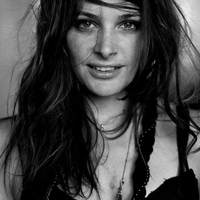In a world that is becoming increasingly globalized and uniform, there are fewer regions that are able to maintain their stamp of distinction from a complete modernized overhaul. In their sincerity, simplicity and authenticity, the Outer Hebrides – the western Islands of Scotland – contain a handful of the last Gaelic-speaking communities in existence today.
Compelled to document the way of life in these communities, photographer Laetitia Vancon travelled to the Isles, and soon found herself particularly interested in the stories of its young citizens. She explains, “I decided to focus on these young people trapped in between an aging population and a decreasing economy, where jobs and studies are limited. I’m looking at how they belong to this place, and how this place is shaping their identity.” The resulting images make up here series Aig deireadh an latha, Gaelic for “At the end of the day.”
This tension between embracing tradition and existing as a modernized global citizen colors the region’s youth culture. As the young adults grow older, they wonder what opportunities are available beyond the home they’ve dug their roots into, and contemplate whether or not their way of life is worth abandoning. But there isn’t a hostility towards these traditions. Instead, they provide comfort, and symbolize a necessary facet of each young person’s identity.
“The young people are really aware of their cultures and traditions, and they are proud of them,” explains Vancon. “They speak Gaelic at home with their parents, and then they will speak in English with their friends.” While their microcosm is well-preserved, evolution is inevitable, and Vancon questions whether collective identity defines their space, or whether the space is what ultimately moulds their identities. “I didn’t find a culture that was dying,” she says. “Instead, I found them reinterpreting the traditions.” But the question remains: How can these young people chisel out a path to the future without abandoning their heritage?
Vancon suggests observing this slower, traditional way of life forces us to hold the mirror up to ourselves, questioning how our own identities might be shaped and harnessed. “At the end of the day, this project is not only about them,” she explains. “It’s about us. How do we look at ourselves? By looking at these specific places where there is less opportunity and things are slower, we can zoom in on our own choices in life. This is a flag in all the stories I like to tell: this search for identity and the way we belong to something – to somewhere.”







































